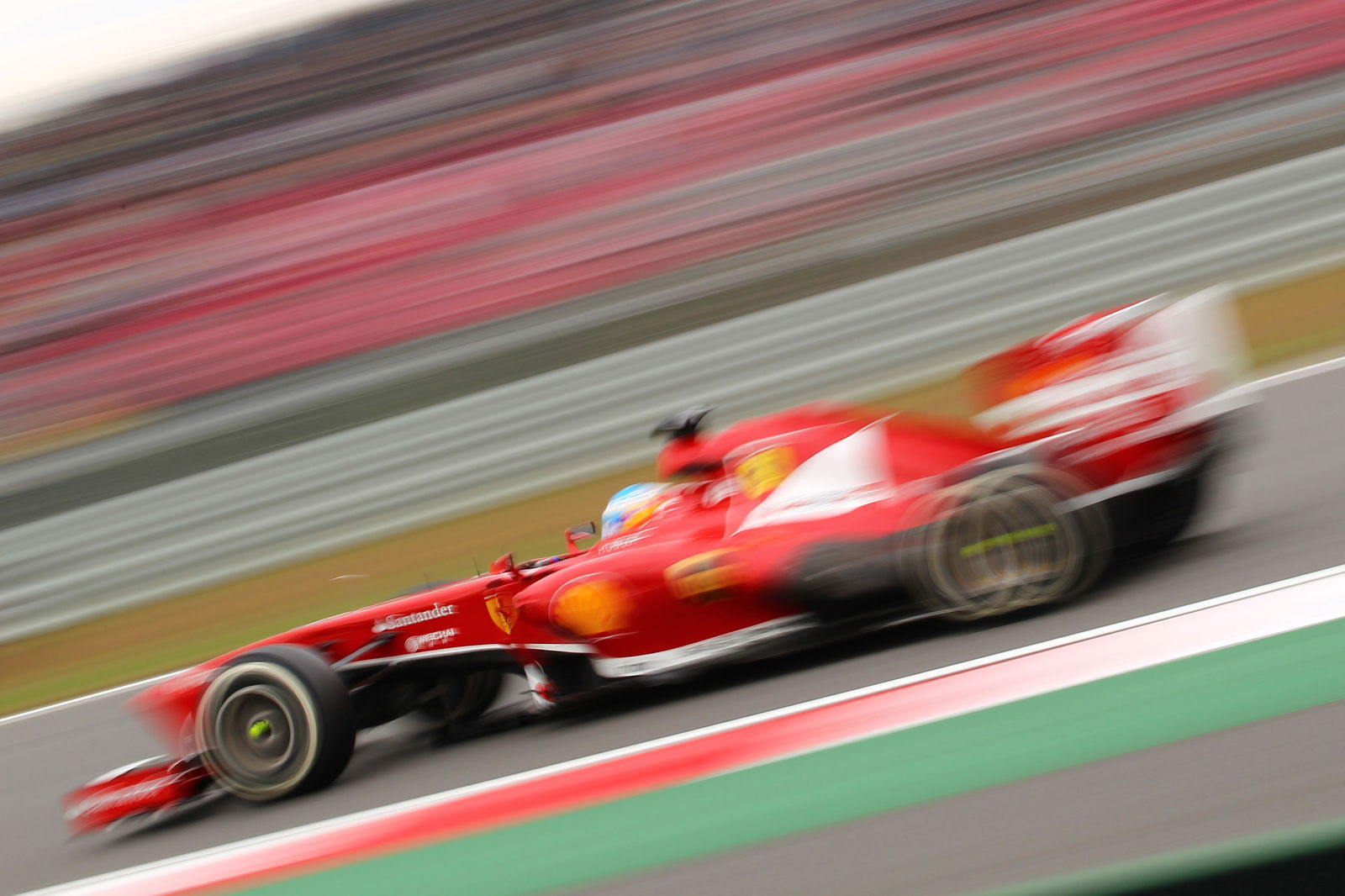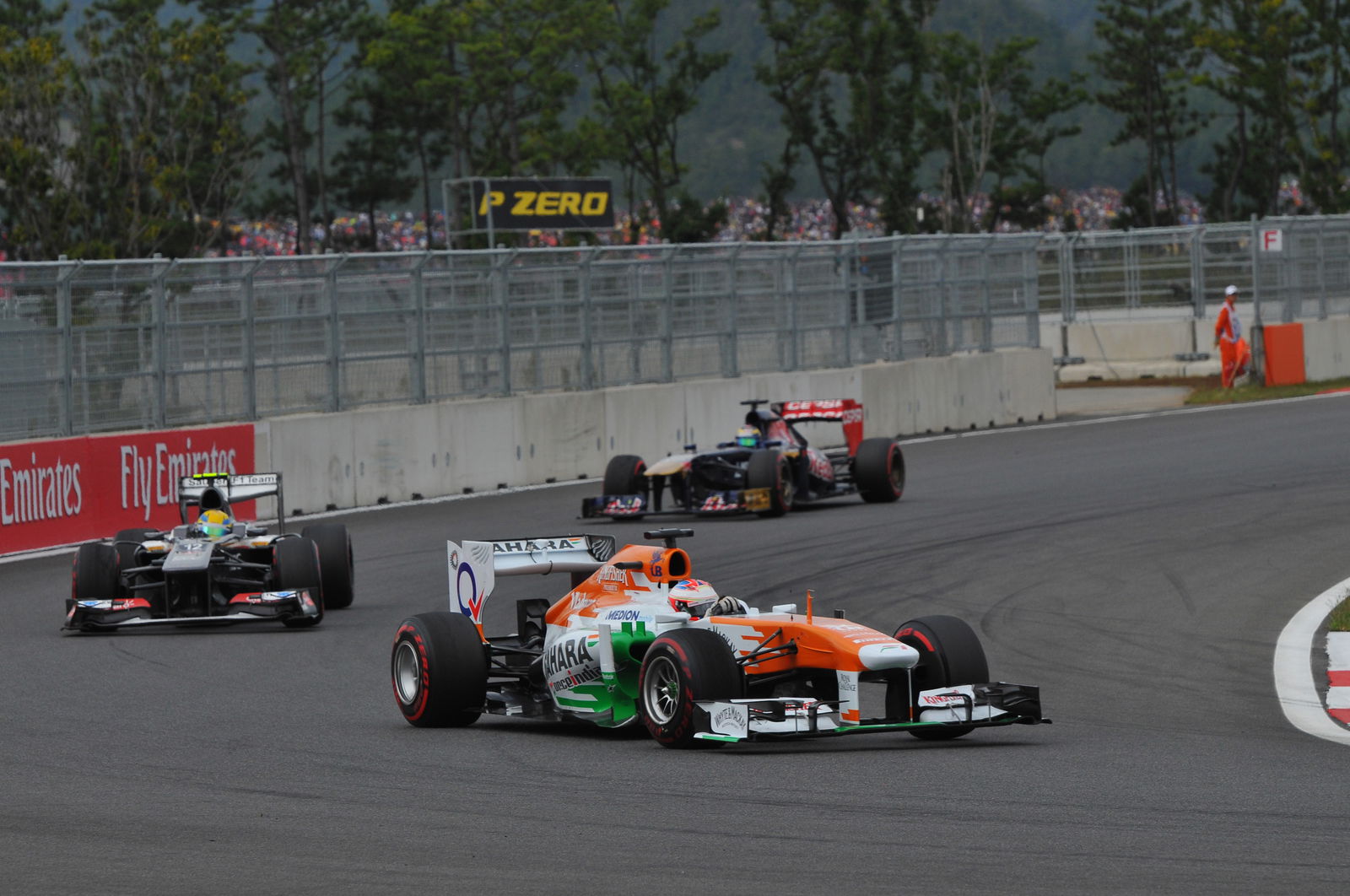Korean Grand Prix: Flat-spot to blame for Perez tyre failure

Pirelli has pin-pointed a moment earlier in Sergio Perez's Korean Grand Prix as the culprit in the case of his delaminating front right tyre.
The Mexican suffered the frightening failure - albeit not quite as dramatic as the one that threatened the following Fernando Alonso at Silverstone - as he neared the end of his second stint, the tread parting company with the rest of the tyre as he accelerated down the long straight towards turn three. The explosion littered the road with debris, both from the tyre and the front of the McLaren - puncturing one of Mark Webber's tyres as he attempted to negotiate the bombsite - and it was some time before Pirelli was able to determine the cause.
However, even as Perez returned to the fray, going on to take the final point in tenth position, the Italian manufacturer claimed that a lock-up earlier in the race had probably been to blame.
"Regarding Sergio Perez's front-right tyre issue, we have been able to determine very quickly that it was the result of a flat-spot caused by a lock-up under heavy braking," Pirelli's motorsport director Paul Hembery confirmed, "We're obviously on exactly the same construction [of tyre] as we raced here last year, so there's no underlying problem, while flat-spots or punctures have just always been an integral part of racing."
"We definitely deserved more today - we were very unlucky," Perez added, confirming Pirelli's suspicions, "I'd done 21 laps with that set [of tyres] when, all of a sudden, the front-right just exploded, destroying the front wing. Although that particular set was already quite old, I had braked at the same point as normal and got a flat-spot from the lock-up.
"It was lucky, because there weren't any other cars around me. Still, from a team point of view, it's very disappointing for a single incident like this to destroy the good progress we'd made all weekend."
While Pirelli was able to justify the Perez incident, it was subsequently forced to backtrack on the prediction it made pre-race regarding tyre usage.
"The two safety car periods altered the complexion of the race, but our strategy prediction was not quite right when it came to the timing of the stops, although the broad scheme was correct," a post-race statement explained, "We said that the fastest strategy on paper was to start on supersoft, change to supersoft again on lap 20 and then change to the medium on lap 40."
Although the same statement claims that racewinner Sebastian Vettel went onto the supersoft on lap 11 and then the medium on lap 31 under the first safety car, the German actually took on a set of used mediums at his first stop, confirming that the harder rubber had been the preferred choice for raceday.
"With the medium compound proving to be the ideal race tyre, most drivers aimed to get onto it as soon as possible, with teams reacting from the start of the race to the strategies that had been put in place by their immediate rivals," Hembery added, "We had a tyre choice that may have been aggressive, with the supersoft being a perfect qualifying tyre and the medium optimal for the race, but this was in accordance with the requests of many of the teams."
The two safety car periods - the first for Perez's tyre and the second for Mark Webber's fiery Red Bull - had an important effect on the race strategy, which meant that all the finishers bar one, Caterham's Giedo van der Garde, completed the race with just two stops. Without safety cars, it is likely that more drivers would have stopped three times, but it was always going to be within the two to three stop window.

